tips on removing an infected tooth when you have chemical and electrical sensitivities
I heard years ago that root canals were potentially harmful to your health. I read about the research of Weston A. Price, D.D.S. from the 1930’s where he implanted root canal teeth from sick patients under the skin of rabbits, and in almost every case, the rabbits developed the same disease of the patient, sometimes even dieing within a few days. His experiments showed that bacteria trapped within the tubules of root-filled teeth migrated throughout the body, infecting organs, glands, and tissues. It seemed logical then to wonder if my Crohn’s disease, symptoms of which started around the time I received my root canal at age 13, was actually an infection that had migrated from my front tooth. Dr. Price’s experiments were part of a 25 year root canal research program carried out under the auspices of the American Dental Association (ADA) and then covered up, according to George Meinig’s book Root Canal Cover-Up.
Dr. Price found that many types of degenerative illnesses – heart/kidney/lung/bladder and others diseases – could be transferred to the rabbits. Not just from implanting the whole infected teeth under their skin, but also by embedding small pieces of the root, injecting pulverized teeth (a powder), or even just the toxins from the teeth after being cultured in the lab. The other part of his experiment showed that a lot of his patients recovered from their afflictions after removing the root canal teeth. For a person who is chronically ill and has exhausted other avenues of treatment, hearing this news can provide much needed hope and direction.
I consulted with a holistic dentist after suffering (in addition to a life lived with Crohn’s disease) severe mercury poisoning from a broken thermometer in my late twenties, chronic lyme disease, and a chemical injury to my lungs and brain from a toxic outdoor fire when I was 32. I developed severe and extensive food allergies almost overnight a month after the fire incident, and had classic mercury toxicity symptoms (a rash on my face – misdiagnosed as rosacea – inappropriate flushing of the face, severe anxiety, panic attacks, dulled thinking, dyslexia, moroseness, social withdrawal, and other symptoms). What I didn’t understand then, is that I was becoming severely environmentally intolerant, on my way to becoming what they call a “universal reactor.” Nonetheless, I knew I was losing my health and as soon as I found out I had mercury poisoning, I decided to have my mercury amalgams removed and replaced with bio-compatible composite materials. I asked my holistic dentist about extracting my root canal but she was quite hesitant to recommend I remove my front tooth, mostly because the tooth replacement options – an implant, bridge, or removable partial – were not ideal and each one of them could potentially create new health problems for me. Plus, she had not observed great health improvements in her patients who had removed root canals in the past. She encouraged me to wait and only go down that path as a last resort.
Fast forward almost eight years. I have lost everything from my former life: my highly prized rent-stabilized NYC studio on a tree-lined block in the village, my friends, my career, my material possessions (clothes, books, CDs, furniture, etc.), my passions (photography, Middle Eastern music and dance), even my family. I live in what amounts to a metal box with concrete floors in the middle of the high desert in Arizona, my worldly goods pared down to what fits in my car. I am disabled by environmental illness. I have only a few tolerable outfits to my name. No bedding except for a pillow. An inability to use overhead fans, a/c units, most heating systems, dishwashers, microwaves, cell phones, even T.V. My diet is severely limited and I can only tolerate Mountain Valley spring water, bottled in glass, for drinking. I haven’t had a normal bowel movement in almost six years; my particular form of “Crohn’s” is an unrelenting diarrhea that is sometimes tied into chemical exposures. I would say that I was more than ready to go down the root canal extraction path when my front cap unexpectedly came out one day while eating a burrito. I was talking to an old and dear friend about a mutual friend, Indira, who had passed away recently. I like to think that it was Indira who pulled that front cap out, sending me help from beyond.
I could have chosen to glue that front cap right back on the “dead” half-tooth that remained, but Indira must have beat me to it and the tooth disintegrated on its own a few days later, so that there was barely anything left to attach the cap to. Because of my severe chemical and electrical intolerances, I had huge amounts of anxiety about getting the tooth pulled – not only was the procedure a risk, with the use of local anesthesia, x-rays, and other substances that could harm my health permanently, but I didn’t even know if I could tolerate a dentist’s office.
I found a specialist in root canal extractions just over three hours from my home, highly recommended for “difficult cases” like mine by two holistic dentists I contacted in other towns. I decided to pull the tooth and get a “removable partial,” at least initially until the gum had time to heal. I did not want an implant which uses metal, or to file down my natural teeth for a permanent bridge. Then I talked to friends with environmental illness who had removed root canals and did research online to prepare a list of questions to ask the dentist. My list included the following:
• What sort of anesthesia is used, and do you do kinesiology (also known as muscle testing) to determine the right type? Epinephrine-free (epi-free) and preservative-free polocaine and carbocaine were two recommended as tolerable by other people with chemical intolerance. My dentist used polocaine, which he muscle-tested me for to make sure it was right for me. He also used a pre-numbing solution of benzocaine. I did have some breathing problems initially but overall it went fine. I didn’t eat enough after the procedure and had a major emotional meltdown driving home, when the chemicals went through my system (I typically have emotional meltdowns from chemical exposures). I also felt very physically ill by the time I arrived home. But as soon as I got some food in my system, I felt a lot better!
• How do you test for biocompatibility of materials used for the removable partial? We did a Cliffords blood test, which I did have my doubts about, but ultimately I tolerated the materials perfectly, with no reaction at all!
• What do you use to kill the infection after the extraction is completed? My dentist wrote me a prescription for an antibiotic, which I chose to avoid due to my chronic candida and gut issues (antibiotics kill ALL bacteria, good and bad, and can cause really bad gut problems for some people). Instead, I chose to use an herbal antibiotic – cryptolepis – which is featured in Stephen Harrod Buhner’s book Herbal Antibiotics. I took 30 drops 3x day for 14 days but I could’ve taken it for 5-7 days according to the herbalist at woodlandessence.com, where I purchased it from. I wanted to be sure I killed the infection so I used it longer.
• Do you use the George Meinig procedure for extractions? One risk of pulling a tooth is developing a cavitation, or an infected hole in the bone. My dentist scraped at least a millimeter of my jaw bone after the tooth extraction, to make sure any infected bone and periodontal ligament lining the tooth socket were removed.
• How can I avoid a dry socket? If after your tooth extraction the blood clot that naturally forms is dislodged, then you may develop what is called a “dry socket.” You’ll know if you get a dry socket if instead of noticing less discomfort with each passing day after the surgery, between three and five days you start to feel increased pain at the extraction site and/or a foul taste and odor. By following the self-care guidelines given to me by my dentist after the extraction, I was able to avoid a dry socket. Essentially, you need to be very careful about eating, rinsing, sucking, spitting, etc. in the first few days after the surgery.
Fast forward almost eight years. I have lost everything from my former life: my highly prized rent-stabilized NYC studio on a tree-lined block in the village, my friends, my career, my material possessions (clothes, books, CDs, furniture, etc.), my passions (photography, Middle Eastern music and dance), even my family.
General recap of tooth extraction experience
- Pre-extraction Consultation My initial visit included a new patient consultation, panaramic x-ray, mold of my teeth and gums for the removable partial, and a tooth cleaning. My appointment lasted about four hours!
I had trouble breathing in the dental office and had to repeatedly leave to go outside and get “fresh air.” I brought my oxygen tank with me, which let my dentist’s office know that I had respiratory issues they needed to take seriously. A few perfumed patients that day made the office unsafe for me. But having had a difficult time there for the initial visit, meant they took the extra steps needed to insure a scent-free surgery appointment.
- Extraction, Infrared Light Treatment I was in at 7 a.m. for the oral surgery, and out by 9:30 a.m., which included an hour under an infrared light to help initiate healing.
The injection of local anesthesia was extremely painful. The dental assistant held my hand and I thought I was going to hurt her, I squeezed so hard. The extraction itself was fairly quick and painless. My tooth came out in two pulls. The dentist said my body “did not want that tooth,” because it came out so easily. I breathed such a sigh of relief from the release of all the built up tension and anxiety that I had around the surgery. I was so relieved when it was over.
I used no painkillers or antibiotics. I did not have much pain – aside from the excruciating multi-injection of local anesthesia into my gums. The extraction site did not ache or radiate pain. I did not get an infection in the gum, and I used an herb with strong antibiotic properties to help kill any infection that might have migrated from my root canal to an organ. I also rinsed my mouth with lukewarm sea salt water per the instructions from my dentist.You might not have the same experience. Some people do experience pain, and do get infections. I can only tell you what I experienced. But I did a lot of research and used my knowledge about food, herbs, homeopathy, and self-care to help increase my chances of a quick and speedy recovery.
Note: My head was so loopy from not sleeping the night before (I stayed at a campground near my dentist’s office and slept in my car) and from the whole experience, that I did not realize I started driving home in the wrong direction and added 2+ hours to my trip. Not good! Make sure your directions are written out step by step for the way home if you are driving yourself. (I was following the directions for the way there, but just reversing everything, or so I thought!)
- Removal of Stitches 10-15 days after the oral surgery I needed to return to get my stitches removed.
The procedure did not hurt and took about 10 minutes. I also had my removable partial adjusted since it was hurting my teeth and it made a big difference!
I used no painkillers or antibiotics. I did not have much pain – aside from the excruciating multi-injection of local anesthesia into my gums. The extraction site did not ache or radiate pain.
My chemical-free healing toolkit
Here are some of the things I used to help support my body through the procedure:
General support
• One online healer friend was giving me long distance Reiki during the extraction.
• Another had me on his HeartMath frequency. I wasn’t sure what that meant, but I welcomed all the energetic support from afar that I could get!
• I drank plenty of wheatgrass and green vegetable/sprouts juices in the weeks leading up to the surgery, as well as the week after.
• I gave myself probiotic retention enemas (implanting beneficial bacteria via the rectum) a few days before and after the procedure, to help my body fight off any infection.
• I brought my own drinking water, toilet paper, organic cotton pads (to help control bleeding after extraction) to all dentist visits.
• I used paper towel sheets to line the chair I would sit in for the surgery to protect my clothes from any synthetic cleaning agents – but you could bring your own tolerable material if you have any (I did not).
• I scheduled the procedure before office hours to avoid fragranced patients.
• I asked if those employees interacting with me would avoid using fragranced products, including deodorants, until after I left the office.
Radiation support
• The week before my x-rays I ate more seaweed, beans, sweet potatoes, carrots, broccoli, and garlic – all foods said to be protective against radiation. Other good foods: orange and dark green veggies like winter squash, beets, kale, collards, chard and spinach; cabbage, arugula and other vegetables in the cabbage family; miso broth; dried beans, especially lentils; foods rich in selenium like nettle infusions, burdock root, shellfish, and ginseng.
• I started taking Yarrow Environmental Solution (YES), an herbal supplement made of whole plant tinctures and flower essences of yarrow and echinacea, said to be helpful with radiation. I did react to this orally (its in a brandy base, and I am alcohol intolerant) and so I just held the bottle during the x-rays, as I am very responsive to even just the energy of substances in a bottle.
• I imagined myself wrapped in psychic lead, with all my cells protected from radiation damage.
• My doctor gave me a liquid homeopathic remedy for radiation right before I got my x-rays.
• I held a small glass vial of a homeopathic radiation remedy sent to me by a healer friend on the day of extraction, when they did two more x-rays.
I did not notice any reaction or negative effect from the x-rays. I am very electro-magnetically sensitive, so this was a big concern to me.
Inflammation/pain support
• I started taking a homeopathic remedy of Arnica montana (30C) 2 days before the extraction. Arnica is used for trauma, bruising, and swelling from injuries. Others had recommended I take it in a 1M or 200C strength, especially on the day of the extraction, but I was not able to buy it in time. I did just fine with the 30C strength.
• I also drank ginger tea in the days before the extraction. Ginger has anti-inflammatory properties.
• After the extraction, my dentist gave me a homeopathic remedy for pain and inflammation called Relief-Tone by Energetix. It contains homeopathic solutions of Arnica montana, Belladonna, Cortisone Aceticum, Hypericum perforatum (St. John’s Wort), Symphytum officinale (Comfrey), as well as glycerin, ethanol, and purified water. I took 5 drops under my tongue every hour the first 4 days, then 30 drops twice a day until the bottle was finished.
• The first few days after the extraction, I added fresh turmeric (anti-inflammatory), ginger (anti-inflammatory) and garlic (anti-bacterial) to fresh vegetable juices, to boost my healing.
My gum seemed to heal very quickly, starting the very first night. Not sure if that is normal or expected, but it was comforting to see things progressing nicely so soon after the procedure.
Anxiety support
• Just before the extraction, I took 4 drops of Rescue Remedy in a small glass of water. I don’t usually use this, but I had a gut feeling it would help me relax. It did.
• Just before the removal of the stitches, I took 4 drops of Rescue Remedy in a small glass of water.
Pre-planning pesticide check
• I asked my dentist’s office if they used pesticides in their office. They said that they only used natural pesticides. Since some natural pesticides can be toxic, I asked for the name of the Pest Control company and then called them myself. They told me that they only used diatomaceous earth and a boric acid/corn cob mix in my dentist’s office. I was satisfied with that answer.
• To prepare for the road trip, I called my county’s pesticide spraying office to find out which route would be safest to use for the days I was traveling, so I could avoid driving through an area that was actively being sprayed with pesticides that day. Check with your Department of Agriculture or Department of Transportation to find out your local schedule.
• I stayed at a campground the night before, and also called them to find out if they use pesticides before I went.
The main bacteria Dr. Price found in infected teeth were streptococcus, staphylococcus, and spirochetes. I have tested positive for all three in the past, the first two in nasal cultures and stool tests. The third in a blood test showing Borrelia burgdorferi. However, my extracted root canal tooth was tested for infection after the surgery and it came back showing no evidence of malignancy. There was a note on the report saying that perhaps the infection was in an area of the tooth not visualized by their processing techniques. My dentist explained to me that he did see an infection when he removed the tooth and that my x-rays show infection in the tip of the tooth. He said that sometimes the extracted tooth will crumble and disintegrate in the solution they use to send it to the lab.
For better or worse, I removed my 30-year-old root canal tooth with much trepidation and preparation. My gum is healing nicely and I am managing well with my removable partial. I have yet to notice any real health benefits from the procedure, but I hope that over time, my body will thank me for the removal of this dead organ. I am still hoping that my intestinal problems will eventually clear up as a direct result of this experience.
Note: an electrically and chemically sensitive friend got an abscessed tooth extracted after me, and paid 1/3 of the price going to a conventional dentist in her area. I would recommend you shop around for price, as well as willingness to accommodate your environmental intolerances.

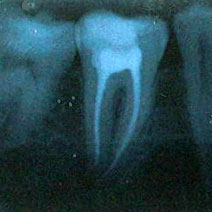




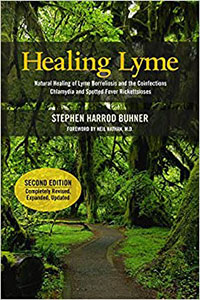
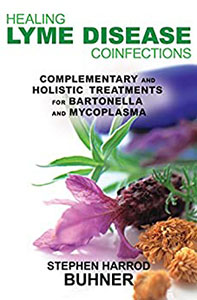
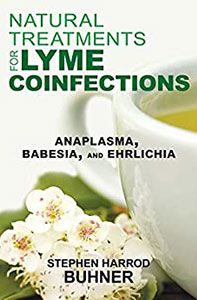
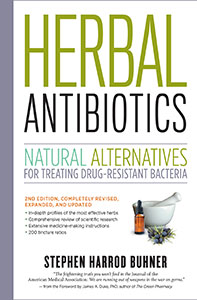
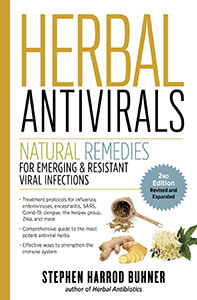
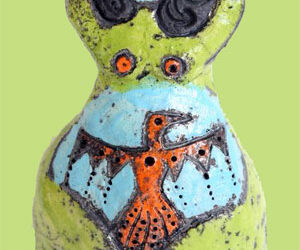


I was diagnosed with ALS (amyotrophic lateral sclerosis) 15 months ago. At that time riluzole was prescribed. I found I could not tolerate it. did very little to help me. The medical team did even less. My decline was rapid and devastating. The psychological support from the medical centre was non-existent and if it were not for the sensitive care and attention of my primary physician, I would have died. There has been little if any progress in finding a cure or reliable treatment. My ALS got significantly worse and unbearable because of my difficulty catching breath. Last year, i started on a natural ALS Herbal therapy from Green House Herbal Clinic, i read a lot of positive reviews from patients who used the treatment and i immediately started on it. I had great relief with this herbal treatment. I am doing very much better now, no case of shortness of breath or difficulty swallowing,, my ALS condition is totally reversed. Visit Green House Herbal Clinic website
Hi there!
I was wondering if you could follow up with how you are doing now and if you noticed any health improvements from the tooth extraction. I am debating it for myself right now.
Thank you!!
Thank you for your report on root canal removal. I am convinced that necrotic bone tissue left behind is a source of chronic infection.
I hope you will be able to look into follow up with Ultraviolet Blood Irradiation with Ozone. Please look up Dr. Stuart Weg to learn more. At this time I can’t afford the dental work he strongly recommends, but for me, UVBI has been great in helping with Lyme disease. Disclaimer: This is my individual experience, I am merely inviting you to look further.
I was wondering if anyone who had root canal removed has experienced health improvements afterwards
Hi Corina,
I personally did not experience any obvious gains after I got my root canal tooth extracted.